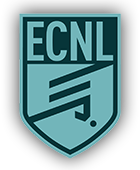Creating a Culture of Great Soccer
The best developmental soccer clubs in the world have a culture that clearly prioritizes player development above all else. The heart of this culture can be seen on the training field in the ideas expressed by the players and the way they try to play every day. While there may be subtle style differences between clubs, the goal of this developmental culture is almost always described the same way: to develop players that play attacking, creative, and possession-oriented soccer. So how do you create a culture that reinforces playing attacking, creative, and possession-oriented soccer?
The best developmental soccer clubs in the world have a culture that clearly prioritizes player development above all else. The heart of this culture can be seen on the training field in the ideas expressed by the players and the way they try to play every day. While there may be subtle style differences between clubs, the goal of this developmental culture is almost always described the same way: to develop players that play attacking, creative, and possession-oriented soccer. So how do you create a culture that reinforces playing attacking, creative, and possession-oriented soccer?
Ray McLean, a consultant with the Australian Football League and multiple other professional sport organizations, states that developing a positive team culture is done by answering 4 questions:
- How are we perceived?
- How would we like to be perceived?
- What actions and behaviors will create the desired perception?
- How do we give feedback to keep people on the “right track”?
The goal of FC Wisconsin Eclipse is to be the best youth developmental club in the country. Achieving this goal (and therefore creating the proper developmental culture) begins with how we train players every day. Where better to look for guidance than one of the best soccer teams of all time - FC Barcelona - and look at how they got so good.
Players at Barcelona play a game called “rondo” … otherwise known as “piggy in the middle” … or as we refer to it … 5 vs. 2 (or keep-away). It’s a very simple game. But they play it every day, and they start playing it as very young players. They play the game hard – and to win. They play the game with excitement to see when skill can outwit a defender. Over time, they become very good at it: video.
The requirements to play “rondo” well – agility, technical skill, quick thinking, creativity, deception, and determination to keep the ball through combinations with teammates – are the same requirements for playing attacking, creative, and possession-oriented soccer. As Ray McLean may put it ... playing and becoming good at "rondo" is a reflection of the desire to be known as a club that consistently develops great players that play great soccer.
Xavi, a player who has been with Barcelona since age 11, described the game (and indirectly the Barcelona developmental culture) this way:
“Some youth academies worry about winning, we worry about education. You see a kid who lifts his head up, who plays the pass first time, pum, and you think, 'Yep, he'll do.' Bring him in, coach him. [Our model] is all about rondos [piggy in the middle]. Rondo, rondo, rondo. Every. Single. Day. It's the best exercise there is. You learn responsibility and not to lose the ball. If you lose the ball, you go in the middle. Pum-pum-pum-pum, always one touch. If you go in the middle, it's humiliating, the rest applaud and laugh at you.”
At FC Wisconsin Eclipse, we also play a variation of “rondo” almost every day. The best players that have come through our training curriculum in the past, (no surprise), were the players that were the best at “rondo.” The best teams that have come through our training programs in the past, (again no surprise), were the teams that learned to love this game together, and who became very good at it. These players and teams played “rondo” every day, and being good at “rondo” became a badge of pride. In other words, playing and being good at “rondo” became a part of the culture.



